Known for frugality, worst stingy but there is more than just being tight when it comes with spending money.
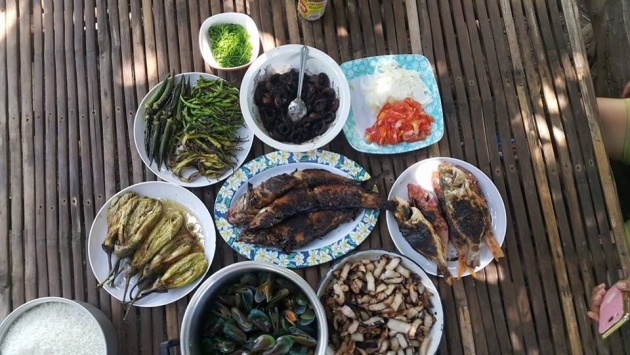
*Image is credited to rain tajon via www.bitlanders.com
Me and my friend went out for a lunch in a place that offers the famous "sinanglaw" or stewed beef innards with a light bitter taste from bile and sourness from kamias or vinegar. It was my first time to eat in that place and I have heard a lot of times about it and it has been featured in a lot of shows. With the thought of how us, Ilocanos are known for such dish, a dish that reflects our "characteristic", I have decided to write another blog that speaks about our food that is being connected with what we are known. Though I have written one before, I will try to write another, with a different approach this time.
It is my way of telling my fellow Filipinos that we, Ilocanos are may are not really "kuripot", we just know how to use what is available, and when to best spend our money. And it is being mirrored with our food.
He who will not economize, will have to agonize."--Confucius
Ilocano Cusine: Making use of everything for our meat dishes.
Okay, we are frugal, we are indeed "kuripot", but we know how to make use of everything for us to save, for us to survive. And with every dish that we cook, it is evidently shown how we really are. Who would love to eat innards, or make use of a cow or goat's bile of some of the stuff that is inside the animal's intestines to add flavor to their food? I never have seen any cuisine here in the Philippines that make use of those. And here are the dishes that we use of everything.
1. Sinanglaw/Sinanglao. I have already mentioned of what they are being made of. But didn't really specified what part of a cow is in the dish. Basically, the dish has innards of either cow or a carabao, but not totally, it has some of the meat part too. In the dish is few slices of meat, blood cake, intestines, and tongue. Sinanglao has a sour and bitter taste, the sourness comes from kamias, a sour fruit or vinegar as a substitute. The bitterness, well, some will say it is from the bile, but we don't really use the bile that much, we prefer to use of the thing that can be found on the animal's intestines. Before you think something, they are actually grasses that has been eaten by the cow or carabao, still on digestion process. The squeezed liquid is being boiled before they are being added. And we call it "papait", "pait' means bitter in Ilocanos.
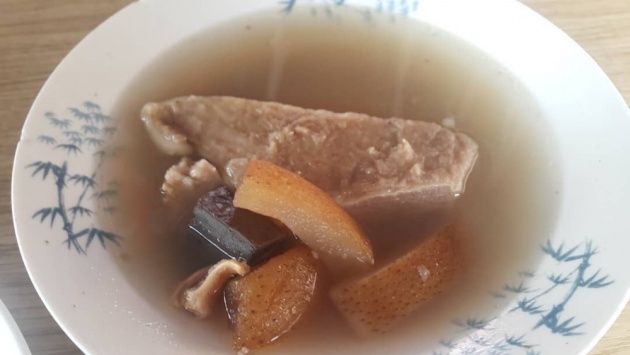
Sinanglao
*Image is credited to rain tajon via www.bitlanders.com
2.Sinkutyar. This dish is actually is the same as "sinanglao", what makes it different is that the cut of the meat is smaller. The taste is just the same. Aside for the cow or carabao's innards, goat's too are being used for this dish. In case of the goat being cooked for "singkutyar", the goat's leg and head are sometimes being added.
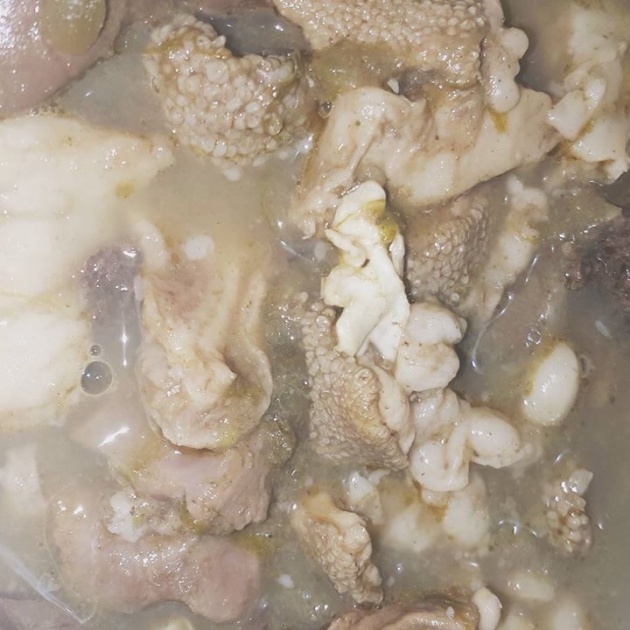
Singkutyar
*Image is credited to Rain Tajon via www.bitlanders.com
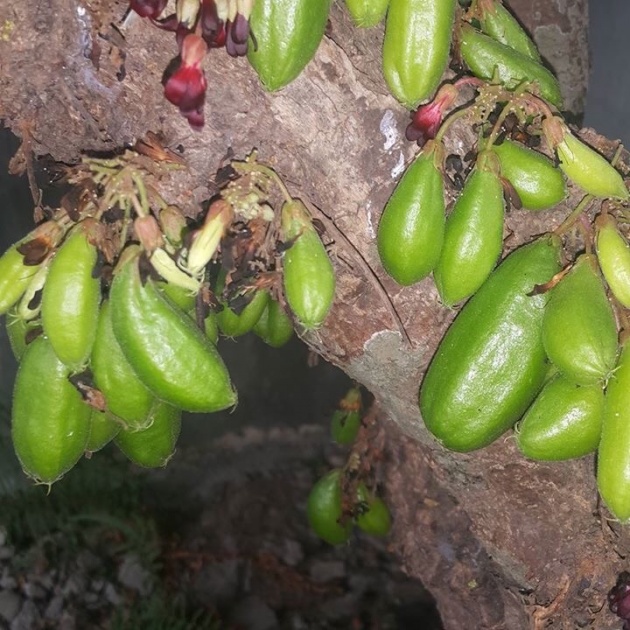
This is kamias.
*Image is credited to rain tajon via www.bitlanders.com
3. Dinakdakan or warek warek. This is like our version of Pampanga's famous "sisig". The dish is made out of pig's face, the tongue, ears that is being boiled to make it tender then char grilled, that gives that distinct smoked flavor on it. But wait, there is more. We add pig's brain on it, well the brain is boiled before it is mixed with the meat. Though some has been using mayonnaise, which has the same effect and close taste to the brain. But the brain is what makes the dish. We really make use of every part right? Even the brain.
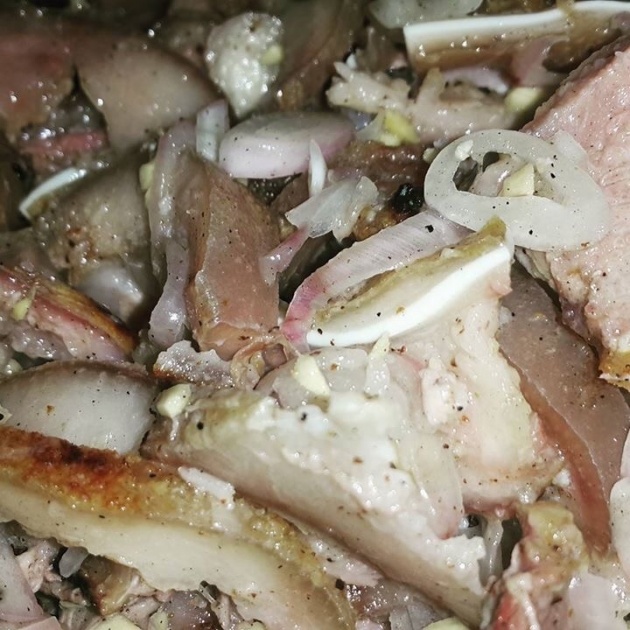
Dinakdakan
*Image is credited to rain tajon via www.bitlanders.com
4. Igado. The dish is made out of pork's internal organs. Pork's heart, liver, kidney, lungs and loin part are sauteed with vinegar, black pepper, bell pepper and it has a bit of orange color that comes from the annatto.
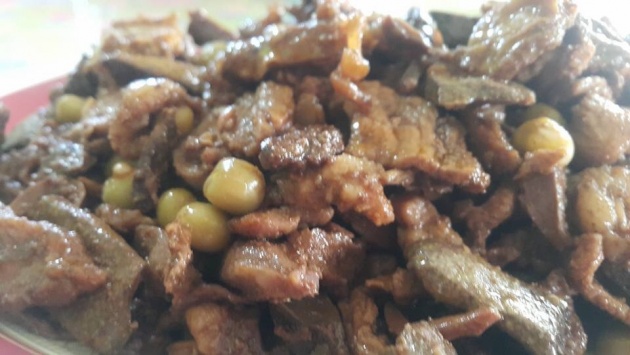
Igado
*Image is credited to rain tajon via ww.bitlanders.com
Ilocano Cuisine: The vegetables we cook.
On the song "bahay kubo" or Nipa house, we Filipinos can see how a simple house can be filled with lots of vegetables, for we surely love our vegetables. And in region, we are not an exception to it and it is being shown on our dishes, our vegetables in every Ilocanos dining tables. What can be found on our yards, what are cheap to buy and what are in season. Here are some of the vegetable dishes that we are known for.
1. Pinakbet/pakbet. For what I know, Pinakbet and pakbet are different but some think that they are the same. Pinakbet is a vegetable dish that is made out of, (well the basic "version") bitter gourd(fruit), eggplant, okra, with tomatoes, shallots and famous "bagoong" or fermented fish with a salty taste, a dried or fried fish is added by some too. More vegetables are being added too, like chili(the long one and not spicy), squash, sitaw or string beans, and what is now make the pinakbet special is that "bagnet" or the crispy fried pork belly( a product of our province) is being added. I sometimes put "longganisa" or the local pork sausage on it too.
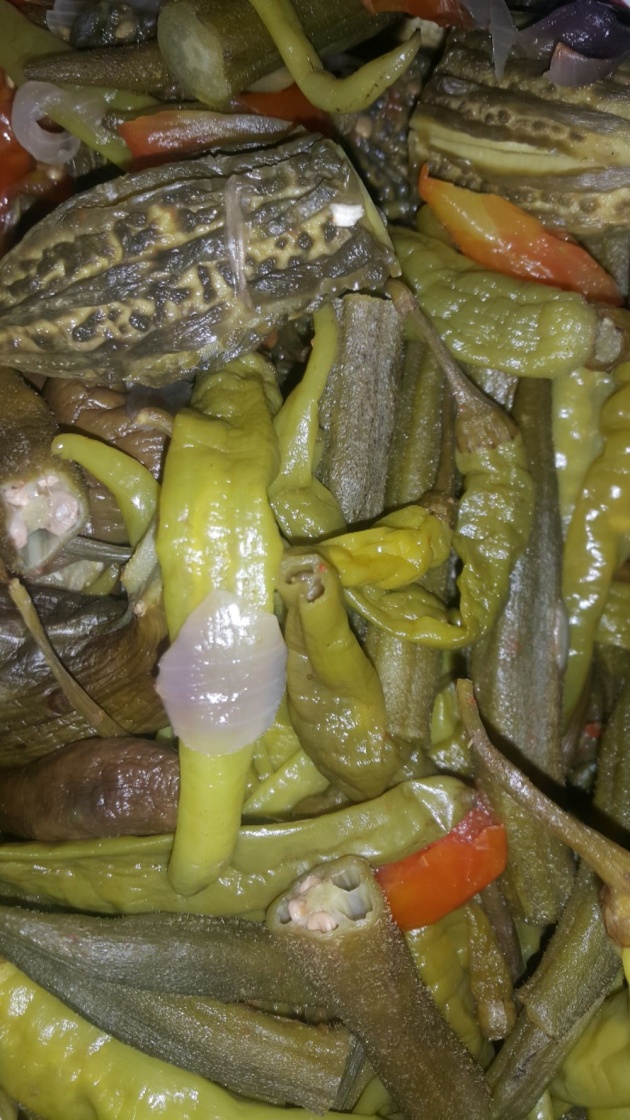
Pinakbet
*Image is credited to Rain tajon via www.bitlanders.com
The "pakbet" on the other is the same as "pinakbet", but the dish has just one vegetable, well, aside from the tomato and the shallots. The most common pakbet is the bitter gourd(the smaller ones) and (okra). These two are the most common and sometimes the cheapest vegetable when they are in season.
2. Dinengdeng or the vegetable stew. There are many vegetables that we can cook for dinengdeng. Green leafy leaves of moringga," saluyot" or nalta jute, bitter gourd leaves, and sweet potato tops. Aside from those leaves, string beans, squash(fruit or flower) and more vegetables. So this dish can really be a dish that we can cook from any vegetable that is available to our yard or garden or what are in season. The fermented fish sauce is what is added to give a taste, fried fish are an addition too which is an optional.
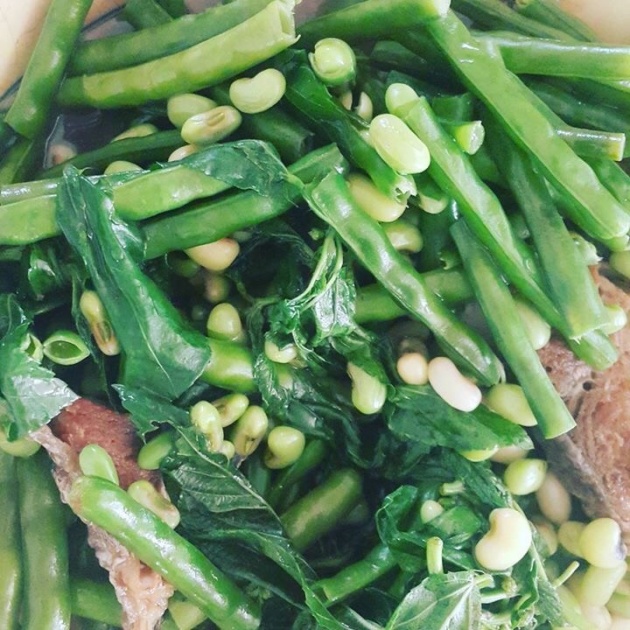
Dinengdeng
*Image is credited to rain tajon via www.bitlanders.com
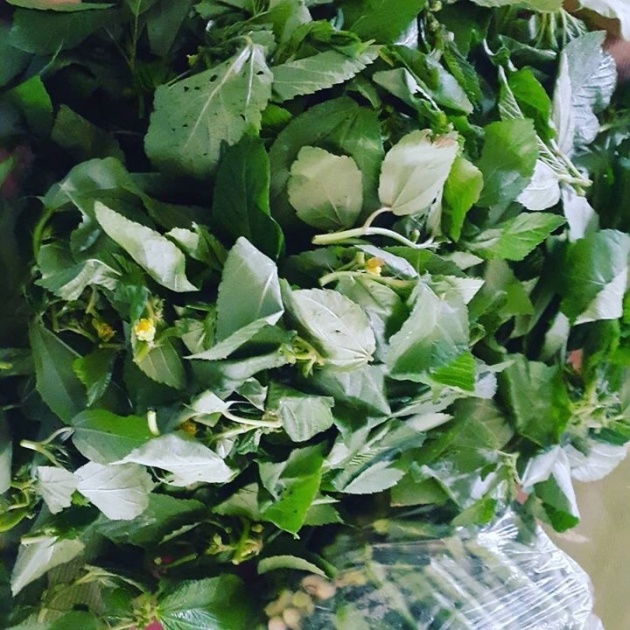
Saluyot and string beans
*Image is credited to Rain Tajon via www.bitlanders.com
3. Burudibud or stewed vegetables with thick broth. This can be like the "dinengdeng" but it has a thick broth. What is in season at the moment is the moringga fruit and this is the most common vegetable that is being used for this dish. Aside from the moringga fruit, we can use of the leaves too, and what makes the broth thick is the sweet potato or any starchy root crop that is being added.
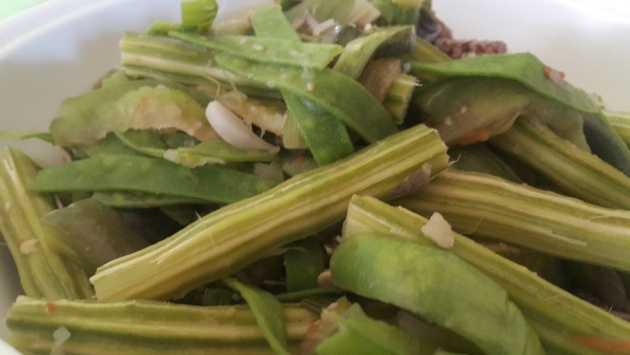
Burudibud
*Image is credited to rain Tajon via www.bitlanders.com
We, Ilocanos might be know for being "kuripot" but believe me, we are not really. We make use of our money wisely. Until next time! Thanks for reading!



